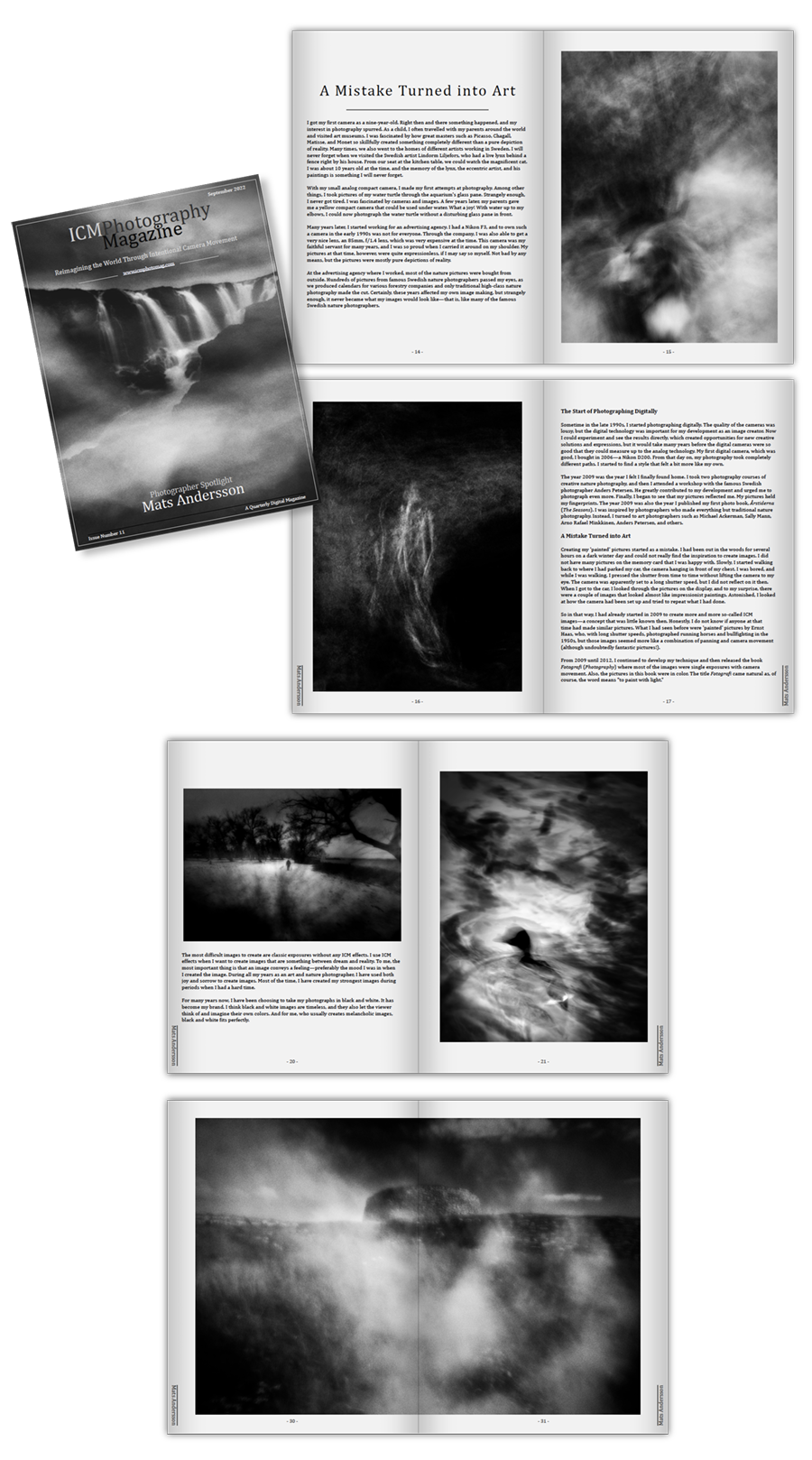A Mistake Turned into Art. I got my first camera as a nine-year-old. Right then and there something …
> Read Mats A article here (pdf)
… Creating my 'painted' pictures started as a mistake. I had been out in the woods for several hours on a dark winter day and could not really find the inspiration to create images. I did not have many pictures on the memory card that I was happy with. Slowly, I started walking back to where I had parked my car, the camera hanging in front of my chest. I was bored, and while I was walking, I pressed the shutter from time to time without lifting the camera to my eye. The camera was apparently set to a long shutter speed, but I did not reflect on it then. When I got to the car, I looked through the pictures on the display, and to my surprise, there were a couple of images that looked almost like impressionist paintings. Astonished, I looked at how the camera had been set up and tried to repeat what I had done.
So in that way, I had already started in 2009 to create more and more so-called ICM images—a concept that was little known then. Honestly, I do not know if anyone at that time had made similar pictures. What I had seen before were 'painted' pictures by Ernst Haas, who, with long shutter speeds, photographed running horses and bullfighting in the 1950s, but those images seemed more like a combination of panning and camera movement (although undoubtedly fantastic pictures!).
From 2009 until 2012, I continued to develop my technique and then released the book Fotografi (Photography) where most of the images were single exposures with camera movement. Also, the pictures in this book were in color. The title Fotografi came natural as, of course, the word means "to paint with light.”
Experimenting and Developing My Technique
My first ICM photographs were made by using single exposures and moving the camera on the same subject. I often used my telephoto 70-200mm, f/2.8 lens. I would set the camera to the smallest aperture (f/22) and lowered the ISO as much as possible to get slower shutter speeds. My first pictures were usually exposed for between 0.5 second to 1 second. I then developed my technique to include in-camera double exposures. The first exposure is typically a classic landscape image made with a tripod. Then I lift the camera off the tripod and switch to a slower shutter speed as I move the camera to another subject where I expose and move the camera. My third technique is in fact the same as the double exposure technique I just described, but here I only do a single exposure with a much slower shutter speed of about 10-30 seconds. With such a long exposure, you must use a gray filter so that the image is not overexposed. I hold the camera completely still for about 2-3 seconds, then I move the camera to another subject where I move the camera for the remaining exposure time. If you want to know more exactly how I do this and get practical tips, you can book one of my workshops.
The most difficult images to create are classic exposures without any ICM effects. I use ICM effects when I want to create images that are something between dream and reality. To me, the most important thing is that an image conveys a feeling—preferably the mood I was in when I created the image …


